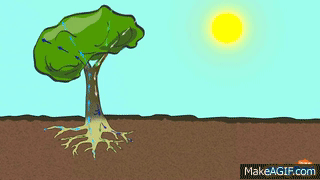 Lifestyle
LifestyleDid You Know: Plants Release Carbon Dioxide At Night
Don't worry, your garden is not doing anything out of the ordinary!
 Cover image via Jessy Christopher-Tham (Provided to SAYS)
Cover image via Jessy Christopher-Tham (Provided to SAYS)Do you ever wonder what plants get up to when the lights go out? Well, it turns out they have a nighttime ritual that might surprise you!
Forget about bedtime stories; plants have their own way of whispering in the dark, which involves a unique exchange of gases.
Picture this: While you're tucked away in bed, dreaming of adventures (or struggling with nightmares), your leafy friends in the garden are releasing carbon dioxide (CO2) into the night air.
Wait, what?!
Let's break it down.
During the day, plants are the heroes of the photosynthesis story. They absorb carbon dioxide and release oxygen, providing us with the fresh air we breathe. But when night falls, the tables turn.
Plants switch to respiration mode after dark.
It's their time to breathe out and release a bit of carbon dioxide.
Don't worry; your garden is not doing anything out of the ordinary. The amount of CO2 plants release is relatively small, and it's a natural part of their metabolic rhythm.
Image via MakeAGIF
You might be wondering, does the CO2 plants release cause a lack of oxygen and pose any health risks?
Well, that's because the levels of carbon dioxide released by plants at night are generally not harmful to us. Outdoor air usually contains around 0.04% CO2, which is a relatively low concentration.
It's also essential to distinguish between carbon dioxide (CO2) and carbon monoxide (CO), the latter of which is often referred to as the "silent killer" gas. Unlike carbon dioxide, carbon monoxide is a colourless, odourless gas produced by incomplete combustion processes.
Coming back to CO2, while humans and animals do exhale a more significant amount of CO2, it's well within safe limits.
Indoor spaces with poor ventilation can sometimes accumulate higher levels of CO2, but the overall impact on our health is minimal when proper ventilation is maintained.
Image via Pinterest


